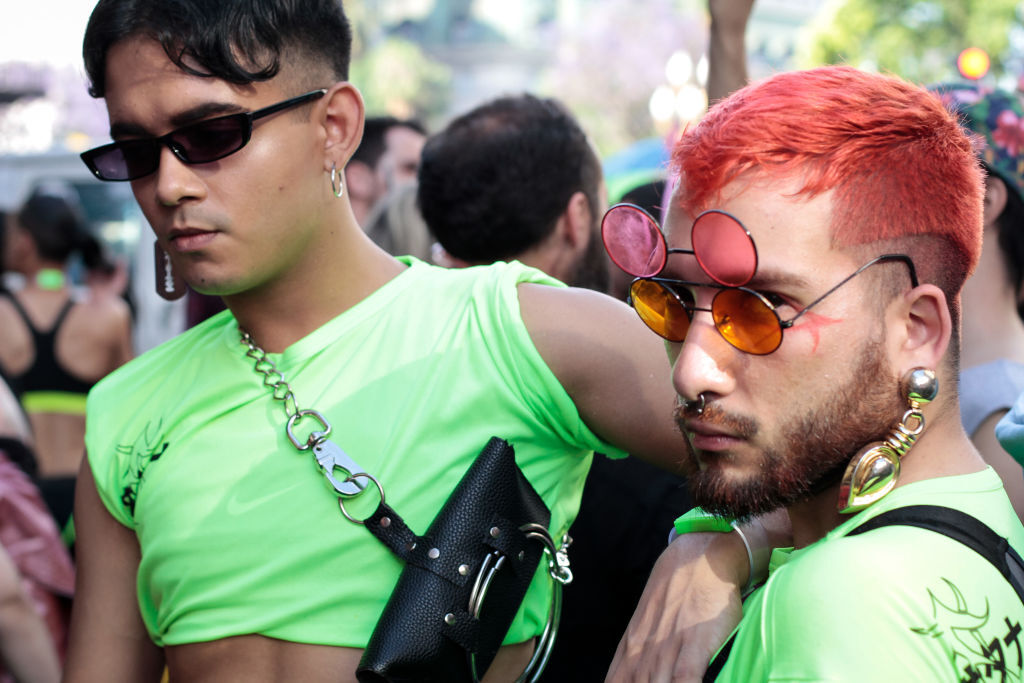This news report from 1992 about Baltimore Pride is still relevent today
Pride in 1992 wasn’t about flashy floats or Instagrammable moments. It was about being visible in a world that would rather you weren’t.

Pride has always been about showing up and being seen—even when no one wanted to look.
In a resurfaced 1992 news segment now circulating on Instagram, a local Baltimore station covered that year’s Pride festivities with the type of earnest early ‘90s reporting on anything LGBTQ+. Watching it now, more than 30 years later, what jumps out most isn’t how much has changed—it’s how much hasn’t.
Here’s the gist: smiling people walk down the street, activists protest government injustice, and community organizers speak passionately about wanting equal rights, healthcare access, and an end to discrimination. Sound familiar?
Pack your bags, we’re going on an adventure
Subscribe to our weekly newsletter for the best LGBTQ+ travel guides, stories, and more.
Subscribe to our Newsletter today
The most striking thing about this clip isn’t the retro fashion, it’s the visibility. In 1992, coming out wasn’t a branding opportunity but a political act. Attending a Pride parade, especially in a city like Baltimore that wasn’t exactly a national queer mecca, took guts.
Related
The legend of the lesbian wolf girls at Vassar College
On campus, you’ll occasionally hear about the “Wolf Girls”—lesbian folklore passed down from the all-women’s college days.
Today, Pride festivals are sponsored by major brands, attended by politicians, and documented in 4K on a thousand iPhones. And while we’ve made enormous progress—marriage equality, increased representation, basic civil rights protections in many places—it’s easy to forget that the foundations of this celebration were laid by people like the ones in that video: grassroots organizers, drag queens, queer elders, and scrappy 20-somethings who just wanted to dance down the street without fear.
What makes this clip feel so current is the reminder that Pride has always been equal parts celebration and protest. Those early activists weren’t just out there for fun; they were fighting for survival. The AIDS crisis was still raging, the “Don’t Ask, Don’t Tell” debate was front-page news, and anti-gay violence was alarmingly common.
And yet—look at them. Smiling, dancing, holding hands.
The fight continues in 2025. Trans youth are under attack across the U.S., and LGBTQ+ books are being banned. Healthcare rights are on the line. And once again, we’re seeing queer folks, especially the most marginalized in our community, having to loudly assert that they deserve to exist safely and with dignity.
That makes this video not just a sweet throwback, but a reminder: Pride is powerful. Pride is protest. Pride is visibility.
Baltimore Pride 1992 wasn’t about flashy floats or Instagrammable moments. It was about being visible in a world that would rather you weren’t. It was about ordinary people doing something extraordinary: showing up, speaking out, and saying, “We’re here, and we’re not going anywhere.”
That message hasn’t changed. In a time when history is being sanitized, banned, or erased altogether, this clip is a testament to our resilience—and a reminder of how far we’ve come and how much further we still have to go.
So take a minute to watch the video. Smile at the vintage ‘90s Pride vibes. Then remember: the best way to honor their legacy is to keep showing up—loud, proud, and unapologetically queer.
Join the GayCities newsletter for weekly updates on the best LGBTQ+ destinations and events—nearby and around the world.

 Mark
Mark 





